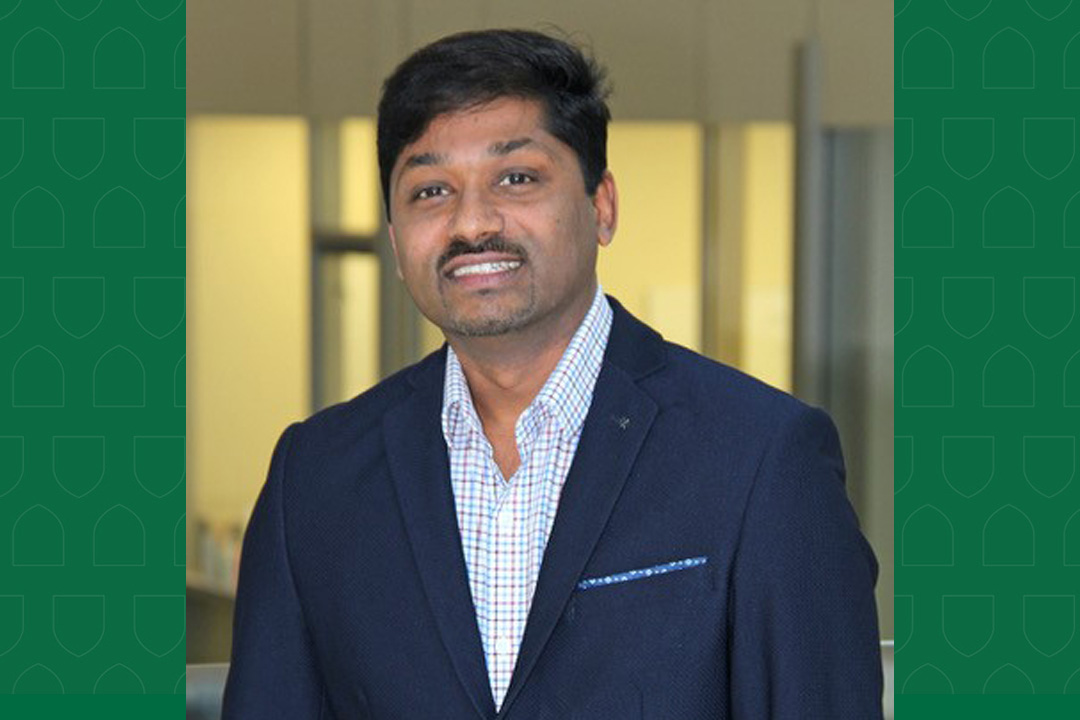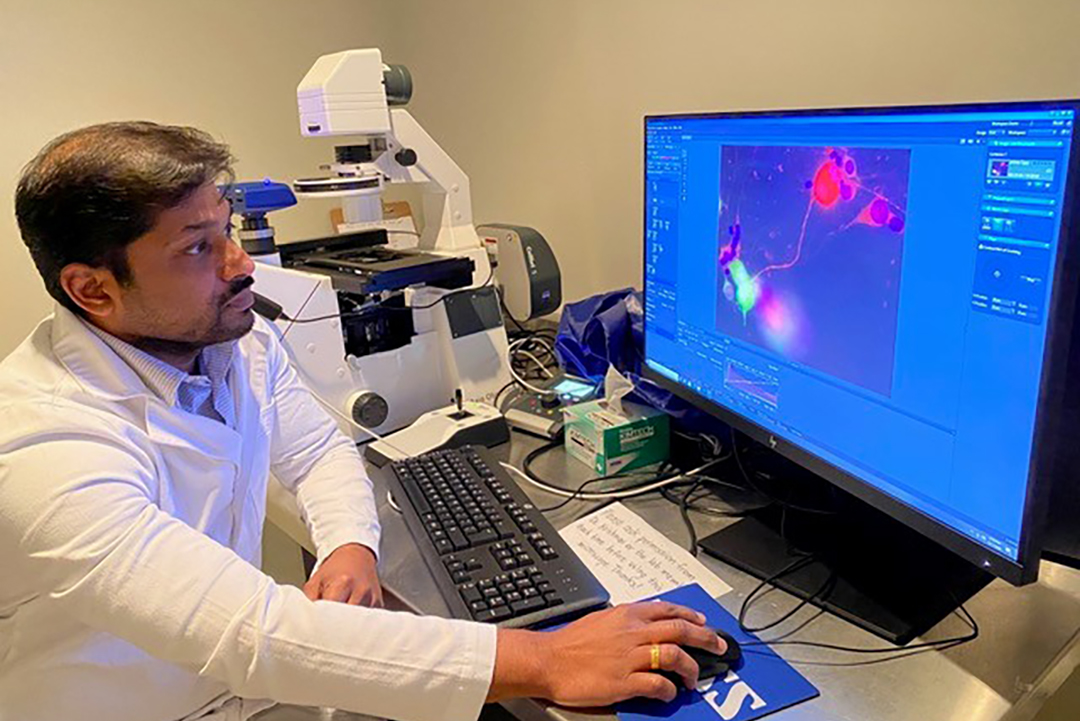
Understanding the way nerves talk to tumours, with Dr. Anand Krishnan
Ever wonder how tumours spread? Researcher Dr. Anand Krishnan (PhD) says tumours communicate using a person’s nervous system. They establish a relationship with nerves, eventually convincing those nerves to deliver food and other supplies tumours need to grow, to clone themselves, and to spread.
By RESEARCHERS UNDER THE SCOPEKrishnan is a researcher and assistant professor in the Department of Anatomy, Physiology and Pharmacology in the College of Medicine.
“How do these nerves contribute to or regulate abnormal growth of body tissue?” said Krishnan.
“The cancer cells are so clever and smart,” he said. “They hijack the stronger population and make them work.”
For Krishnan, finding effective anti-cancer therapies means finding a way to decode the language tumours use to communicate with nerves. Using proteomic analysis, he and his team are studying and isolating growth factors at the molecular level.
“The most exciting part is, once nerves infiltrate the tumour, they also secrete some growth factors and help the tumour progress,” said Krishnan.

Once Krishnan isolates those growth factors, it may open the door to more targeted anti-cancer therapy.
“[Chemotherapy] doesn’t usually differentiate between the normal cells, the good cells — and the bad cells,” Krishnan said. He said a more targeted approach may be possible in a few years’ time.
”What we are trying to do is cut the lines feeding from the nerves to the tumours,” he said.
In this episode, he explains why applying the principles of cancer biology to neuroscience may improve treatments and outcomes for cancer patients. His work may also lead to new therapies and regeneration techniques for patients with nerve damage.
